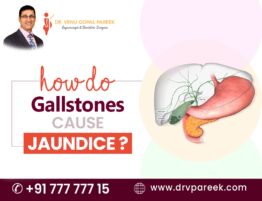
Bile is stored in the gallbladder and released to aid the digestion of fats. In the gallbladder or bile ducts, gallstones are often found as stone-like objects that are composed of cholesterol or bilirubin. Gallstones disease is among the common digestive diseases where several small or big stones are formed in your gallbladder. The condition can be painful and may cause other complications.
Gallstones are formed in different sizes, from small sand grains to golf balls. Surprisingly, it is the small stones that cause more complications than large ones. Smaller gallstones can leave the gallbladder and travel, which may get stuck. The large gallstones will remain in your gallbladder. It is essential to realize that several people with gallstone diseases are never troubled by them, and sometimes they may not even know that they have stones in their gallbladder. For such people, treatment might not be necessary.
Signs and symptoms of gallstones
However, around 10% of people with gallstones tend to develop minor to severe symptoms. Gallstones might cause pain to the right side of your upper abdomen or in the middle of your stomach. Gallbladder pain may frequently occur after eating high-fat foods or fried food; however, people experience pain at any time.
Pain may last for 15 minutes to a few hours, but it can be intense. Untreated or unidentified gallstones may cause symptoms like:
- high temperature
- A fast heartbeat
- Jaundice (the skin and sclera of the eyes become yellow)
- The skin feels itchy
- Nausea and vomiting
- Diarrhea
- Fever associated with chills
- confusion
- A decrease in appetite
These are also the signs of some other problems like gallbladder infection and inflammation of the liver, pancreas, or gallbladder.
As the symptoms may mimic with other severe problems like appendicitis and pancreatitis, you should consult a doctor immediately if you have any of them.
What happens if Gall bladder stones are untreated?
Untreated gallstones may lodge in your bile duct and block the passage, and it may eventually develop severe complications like inflammation and infection of the bile duct, pancreatitis, or cholecystitis (gallbladder inflammation). Additionally, if left untreated, it can also increase the chances of developing “gallbladder cancer”. Gallstone patients often think they might have a “peptic ulcer” because their signs and symptoms are nearly identical. Unfortunately, self-treatment without a proper diagnosis leads to increasing severity of the condition, and patients are typically presented with critical illnesses that require prompt care. In order to diagnose gallstones in time and receive proper medical care, one must be aware of the early signs of the disease.
Why do gallstones develop?
Gallstones can form for a variety of causes, which include:
- When cholesterol or bilirubin concentrations are high in the bile.
- When the gallbladder is not capable of emptying the bile completely.
In people having various conditions, such as:
- Liver Cirrhosis.
- Blood disorders.
- Pregnancy.
- Losing weight quickly.
To know more details about Gallstones Treatment, Read Gallstones – Surgical Treatment vs Medical Treatment.
In most cases, doctors suggest gallstone treatment if the condition causes pain. In some cases, you may not notice that you have gallstones. Your doctor may recommend surgery (Laparoscopic cholecystectomy or Open cholecystectomy) if you experience pain. Your doctor may also prescribe medication.
There are a few non-surgical options for gallstone treatment if you’re at risk of surgical complications. In some cases, even if you receive additional treatment, gallstones might return if surgery isn’t performed. In other words, it’s likely that you will need to monitor your condition regularly. If you are looking for gallstone treatment, consult Dr. V Pareek, one of the best doctors for gallstone treatment in Hyderabad. Call +91 91-777-77715 to book an appointment with the doctor.







